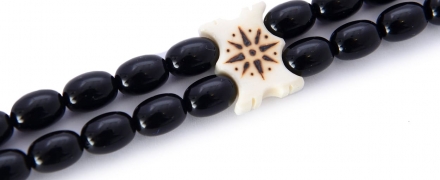open 10 am - 7 pm
laboratory is closed
Ebonite as a jewelry and ornamental material

Ebonite, created in the middle of the 19th century by Charles Goodyear, has entered our daily life not only as an industrially valuable organic material, but also as a material for imitation of jewelry materials - horns, tortoise shell, jet, fossil resins and a number of others. Being a vulcanized rubber with a high sulfur content, ebonite is most often used to make imitation jewelry materials of organic origin, but sometimes you can also find opal and even carnelian and agate made from ebonite. Despite the fact that new high-tech plastics are replacing ebonite, it does not give up its positions. From time to time, in the composition of haberdashery products made of precious metals or in jewelry, you can find this legendary material.
В геммологической практике бывают весьма увлекательные случаи с диагностикой ювелирных вставок
Но помимо редкости цвета и высокой стоимости таких камней, многие розовые камни выделяются одной замечательной особенностью – они проявляют плеохроизм, то есть в зависимости от положения осмотра камня он может иметь дополнительные оттенки – оранжевый или пурпурный.
Currently, gemstones are produced by two fundamentally different technological methods - the High Pressure - High Temperature method (“HPHT”, High-pressure & High-temperature) and the Chemical Vapor Deposition (“CVD”, Chemical vapor deposition) method. The "HPHT" method is the most tested classical synthesis method, which can be used both carbon deposition on diamond from flux melts and catalytic reactions. In "CVD" synthesis, diamond growth occurs on a seed during carbon deposition mainly from a gaseous medium at relatively low temperatures and pressures.
Jewelry and precious stones are just such a category of goods, when buying which you need to pay attention to many criteria.
Sogdianite is a rather rare mineral and more often it can be found as a collection material (moreover, in systematic collections), and it is extremely rare in jewelry.






